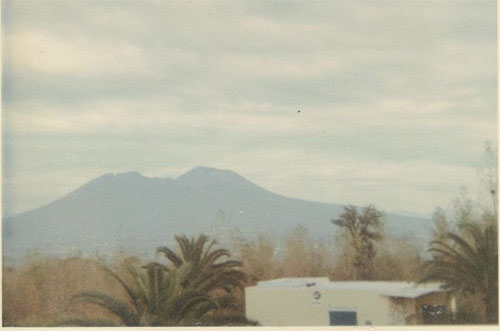

During the 1960s I served in a river and coastal patrol boat base in Cat Lo, Viet Nam while in the U.S. Navy. After completing my year of duty in Viet Nam I was given a choice of duty assignments as was customary at that time. I requested shore duty in Europe. I was rewarded beyond my belief. I was then to be transferred to a very small Naval Air Facility on the civilian Naples, Italy Airport at Capodichino.
At that time the facility performed such functions as fleet mail, hosting the arrival of various dignitaries and high ranking officers from various military organizations of NATO, Naples being the headquarters of NATO South. It provided an aircraft hangar for the Commander of NATO South and other aircraft. Another very important mission of the facility was to provide an area for technicians from various aircraft manufacturers such as McDonald Douglas and others to provide updates and repairs of electronics to fighter, reconnaissance and other planes from the U.S. 6th Fleet Carriers.
I was assigned to the "Crash Crew." It was a young sailor's dream come true. There were three crews that served in rotating shifts of 2 days on and 3 days off. When not on duty we were allowed to live off base. Eventually, several of us from different crews even rented a small villa as it was called there, but basically a small apartment cabin, on the sea near Pozzuoli.
Since the aircraft coming in from the fleet were naval, all had tailhooks for carrier landings. At times some of these aircraft would be disabled and instead of the dangerous landing at sea were sent to us if possible. To accommodate this a long anchor chain was placed by the runway with the required gear necessary to snag the tailhook and slow it down gradually with the chain until a safe stop. If this sounds implausible, keep in mind that these were the fighters of the day, mostly F-4s and A-6s.
One of the assigned duties of the Crash Crew was to go out each morning at daybreak in a crash truck and travel the two runways and inspect for any damage, debris or possible malfunction of the tailhook chain.
One morning, I and a couple of others in the crew made an astounding discovery. A large trench had formed across the end of the two runways. As I recall, the trench was initially about two to three feet deep, and about four feet wide and still growing. The trench had collapsed suddenly since the last incoming flight of the night.
After investigations from experts of both the Navy and Italian officials, engineers, geologists, etc. we were to find out the trench was caused by an underground lava chamber from Mt. Vesuvius. It seems that these fissures are numerous and spread outward from Vesuvius. It was my understanding that this is not a rare event and even buildings had sank as a result of these fissures.
Over the next few weeks the trench grew and major renovations were started for the runway as it was now limited for air traffic. Much of the Naval operations there were temporarily transferred to other bases around the Mediterranean. Because I was within about four months from the end of my enlistment, I was sent back to the states and discharged.
Being stationed there for almost two years gave me many opportunities that I will always remember, such as visiting Pompeii and the Museum in Naples.
I remember going through the villas and found the atriums to be delightful and practical for city life. I seem to recall seeing the house of Caecilius, but am not sure if I actually recall it or it's the power of suggestion through the Latin course. For some odd reason, in the museum, I found the beans on display that were discovered in Pompeii amazing. It just seemed incredible to me at the time that they were almost 2,000 years old.
 Photo to left: Author's photograph of Vesuvius taken from a landing on a barracks in Capodichino
Photo to left: Author's photograph of Vesuvius taken from a landing on a barracks in Capodichino
We also climbed to the top of Vesuvius with a local guide and hiked down inside the cone. What we found amazing is that we sailors were all in our early twenties and could hardly keep pace with the guide who must have been at least twice our age. Later we were to learn that he climbed that mountain several times a week. I also remember all the seismograph stations placed on the mountain side. It was so strange, once we entered the inside the volcano, which I have since heard is not allowed to the public anymore. The phosphorous gases still rose sporadically; the earth was an eerie black, gray and red. It seemed like a vision from Dante. One could place a lit cigarette or match to the ground and cause a slight puff of gas.
At another time I was on a Coast Guard flight out of Naples and the pilot slowly circled Vesuvius at low altitude for us all to have a bird's eye view. Peering down from the slow moving aircraft into the crater seemed surrealistic. This flight was to drop off various supplies to LORAN stations. We went to Istanbul, Turkey and also spent a few days on the island of Rhodes, Greece. During this flight I had one of my great thrills in life, I was allowed to help copilot the plane over Izmir, Turkey. But that is another story.
Mike